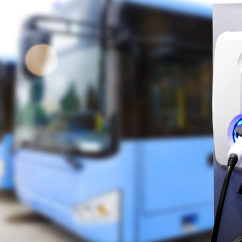With a clear objective in mind, Mercedes-Benz prepares to start producing its Euro VI certified buses.
Passenger vehicle manufacturer, Mercedes-Benz Buses, is preparing a concept named CASE (Connected, Autonomous, Shared, Electric) to begin its transition towards the future of mobility in Mexico.
As a result, the manufacturer confirmed it is setting up its plant in García, Nuevo León to start producing the eO500 U Electric Vehicle chassis and its buses engineered to meet Euro VI standards.
Alexandre Nogueira, CEO of Daimler Buses Mexico, commented that to achieve these goals, it is defining the future of mobility with its CASE concept, using the pillars as described below:
1. Connectivity: All the buses will be connected to the cloud and generate enough data to optimize and provide solutions to their users, operators, the cities they operate in, and the industry overall.
2. Self-driving vehicles: It is known that the German manufacturer has already developed this technology which is ready to be mass-produced. It’s just a matter of time before it’s adopted in Latin America.
3 and 4. Shared and Electric Services Development: The main goal is for the electric buses to be powered by Li-Ion batteries. This goal also considers the implementation of infrastructure and intelligent systems to maximize the use of this technology.
Paving the way for EVs and Euro VI
“The investment in EVs will be proportionate to the volume of units required at that time. Right now, we’re focused on Brazil. However, whenever Mexico is ready, we will be ready too,” commented Raúl González, Sales, Marketing, and Post Sales Director at Mercedes-Benz Autobuses.
He also added that there is high demand for these vehicles, and also a great need and projects. However, it’s still necessary to create a complete infrastructure ecosystem for charging and vehicle management.
Additionally, Raúl García, from the “Casa del Autobús” Plant in García, Nuevo León, stated that they’re reducing production so they have space available to modify the plant and begin operations for both kinds of vehicles.
García added that they’re trying to maintain a healthy production schedule, supply chain, materials, and local vendors due to the shortage left in the components and logistic services because of the pandemic.
He also emphasized that working together with the engineering and development center in Mexico, they have developed the first Euro VI prototypes, which will soon allow them to produce the first units for the Mexican market.
Finally, Raúl García commented: “It’s a great challenge to keep adequate stock to ensure continuous production and deliver to our customers in a market that has grown by 20%. We’re sure that we’re going to fulfill our promise. The advantage that the EVs represent is that they require 40% fewer parts and that means 40% fewer problems.”


